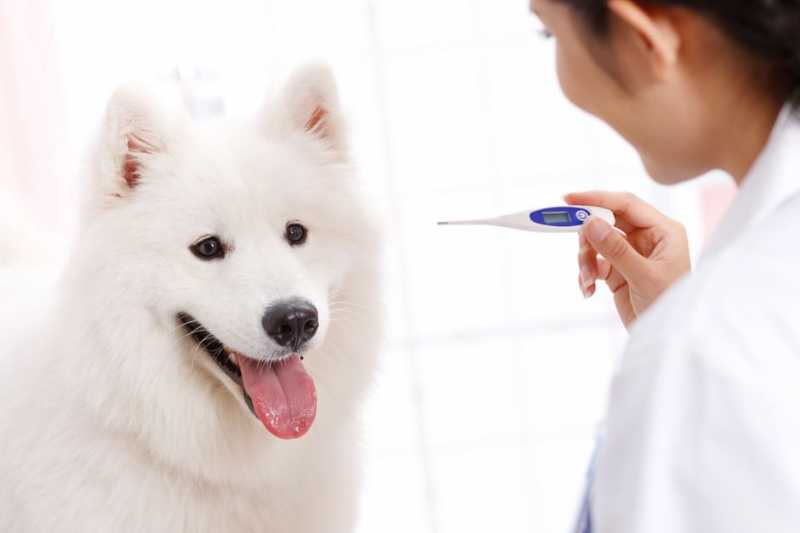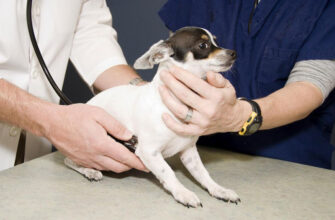Do you know your dog’s normal body temperature? You may be surprised to learn that the normal internal body temperature of a dog is higher than yours. This explains why your dog feels so warm and cozy on cold nights!
As a dog owner, it’s important to know how to check your dog’s temperature and to interpret the reading. Understand what is normal and what is not. Know what to do if it’s abnormal.
What Is a Dog’s Normal Body Temperature?
The normal body temperature of dogs is 101.5 degrees Fahrenheit plus or minus 1 degree. If your dog’s temperature is outside of this range, you should contact your veterinarian.
Warning
Body temperature over 104 degrees Fahrenheit or under 99 degrees Fahrenheit indicates an emergency situation. Extremely high or low body temperatures can lead to death if not treated immediately.
What To Do If Your Dog’s Temperature is Abnormal
If your dog’s temperature is dangerously high or low, go to the nearest open veterinarian immediately. If possible, contact them for advice on the way. Do not attempt to give medications to your dog at home without your vet’s advice.
Warning
Never give your dog over-the-counter medications like acetaminophen or ibuprofen as these are highly toxic for dogs.
If your dog has hypothermia (low body temperature), you may wish to use hot water bottles to help warm him up. Only use electric heating pads on the lowest setting and do not leave them on for too long. Make sure to use blankets or towels in between the heat source and your dog to avoid burns. Make sure your dog can get away from them if they get too hot. Be sure someone is supervising your dog at all times.
If your dog has hyperthermia (high body temperature), offer him cool water to drink. Don’t force your dog to drink if he is not interested. You can also use towels soaked with cool water over the back of the neck, in the armpits, and in the groin region. Don’t leave the soaked towels in place; letting cool air circulate around your dog’s damp skin helps with cooling.
Warning
Never use ice as it can constrict blood vessels, causing the temperature to keep rising. Ice may also over-cool your dog, leading to hypothermia.
Any methods to cool or warm your dog do not necessarily resolve the cause of the abnormal body temperature. Be sure to still bring your dog to a vet for an examination.
How to Take Your Dog’s Temperature
Checking body temperature is an important step in canine first aid. Here’s how to take your dog’s temperature at home:
- DO NOT attempt to take your dog’s temperature orally as you may get bitten. Even if your dog were to allow it, you will not get an accurate reading from the mouth of a dog.
- The most accurate way to measure a dog’s body temperature is rectally. As unpleasant as it sounds, taking a rectal temperature is possible and many dogs can learn to tolerate it well.
- Gather your supplies. You will need a rectal digital electronic thermometer and some lubricant (water-based lubricating jelly works best, but petroleum jelly or baby oil can also be used). Look for a fast digital thermometer to make the process go a bit easier.
- Most dogs dislike having their rear ends manipulated for obvious reasons so this will be easier to do if you get another adult to help hold your dog. Have that person gently place one arm around your dog’s neck and the other arm under your dog’s belly, gently hugging the dog against his or her body. Then, lift your dog’s tail and gently (but quickly) insert the well-lubricated thermometer about one inch into your dog’s anus. Press the start button and wait for the beep that signals completion.
Having Trouble with the Rectal Temperature?
In a pinch, your dog’s approximate temperature can be measured in the axillary region (underarm). Simply place the tip of the thermometer into the armpit area and hold your dog’s arm down until the thermometer beeps (this usually takes longer than it does for the rectal). Then, add one degree to the thermometer’s reading to get a general idea of your dog’s body temperature. Be aware that this measurement is not precise. If you are in doubt, go to your vet for an accurate temperature check.
Tips
- Get a thermometer you can dedicate as “pets-only” and label it well so humans don’t accidentally use it!
- If your thermometer has a “fever alert” warning, ignore it since a dog’s temperature is higher than that of humans.
- Avoid using glass thermometers. These can break and harm your dog. Also, they take about two minutes to get a reading. Most dogs won’t stay still that long.
- You may or may not prefer a flexible tipped thermometer. It can be difficult to get the flexible ones through tight sphincters, but it may be more comfortable once it is in.
- Ear thermometers made especially for dog’s ears can give you an approximate reading but are not considered very accurate.
- You cannot gauge a dog’s body temperature by touch. A warm or dry nose does not necessarily indicate a fever or any other health problem; this is a myth.
- If your dog has an abnormal temperature, try to remain calm. If you get stressed, your dog may pick up on this and get stressed too. Stress in your dog can make the underlying condition even worse. Take a few deep breaths and stay safe on your way to the vet’s office.












